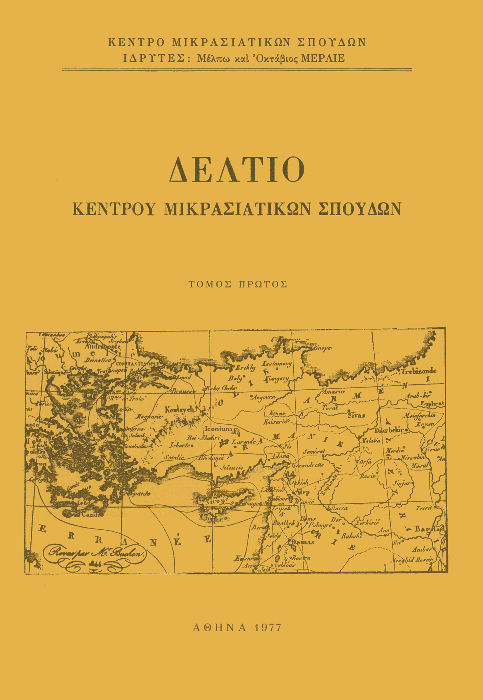The music tradition of Inepolis
Abstract
This article is about the folk music of Inepolis (now Inebolu) before the expulsion of its Christian community in 1922. Among its population almost 30% were Greeks established there since time immemorial. They had their own schools, churches and local festivals. The most important yearly festival was the Feast of the Dormition of the Virgin Mary on August 15. The instruments accompanying the dances were the violin or the lyra (known in the Middle Ages as rebec) and a small frame drum with jingles. The dances were the same as those danced in the other Greek communities of Western Asia Minor such as the Syrtos and the Zeibekikos. There were about a dozen tunes with a particular local flavour used for the singing of a much larger number of folk ballads in Greek, as well as a few characteristic instrumental round dances. This material was recorded in 1931, 1984 and 1989, and is presented here in 14 musical examples transcribed by the present writer.
Article Details
- How to Cite
-
Δραγούμης Μ. Φ. (2009). The music tradition of Inepolis. Bulletin of the Centre for Asia Minor Studies, 16, 347–378. https://doi.org/10.12681/deltiokms.19
- Issue
- Vol. 16 (2009)
- Section
- Articles

This work is licensed under a Creative Commons Attribution-NonCommercial-ShareAlike 4.0 International License.
Authors who publish with this journal agree to the following terms:
- Authors retain copyright and grant the journal right of first publication with the work simultaneously licensed under a Creative Commons Attribution Non-Commercial License that allows others to share the work with an acknowledgement of the work's authorship and initial publication in this journal.
- Authors are able to enter into separate, additional contractual arrangements for the non-exclusive distribution of the journal's published version of the work (e.g. post it to an institutional repository or publish it in a book), with an acknowledgement of its initial publication in this journal.
- Authors are permitted and encouraged to post their work online (preferably in institutional repositories or on their website) prior to and during the submission process, as it can lead to productive exchanges, as well as earlier and greater citation of published work (See The Effect of Open Access).












